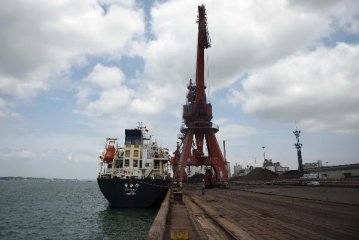
With the entry into force of the latest free trade agreements (FTAs) between China and the Republic of Korea (ROK), and between China and Australia on Sunday, a grand free trade strategy of China has taken shape, aiming to gradually foster a global free trade network and to push for deeper domestic reforms.
Under the China-ROK FTA and the China-Australia FTA, China will gradually abolish tariffs on 91 percent of South Korean goods and 97 percent of Australian products. After a grace period, South Korea will eliminate tariffs on 92 percent of Chinese products, while Australia will eventually impose zero tariffs on all Chinese goods.
Among all the FTAs China has signed with other nations, the deal with South Korea involves the biggest trade volume, and the one with Australia brings trade and investment thresholds the lowest. The two FTAs come in line with the guidelines on accelerating the implementation of China's free trade strategy published by the State Council earlier last week.
Based on the 14 FTAs China has reached with 22 countries and regions, the country is determined to speed up FTA negotiations with more countries and establish more high-level free trade areas. FTAs will become a significant platform for China to translate its economic potential into a source of growth for foreign countries.
Chinese leaders expect the country to import goods worth 10 trillion U.S. dollars and invest 500 billion U.S. dollars overseas in the coming five years. Specifically, the guidelines encourage the opening up of China's service sector including finance, education, culture, and health care, and relaxes investment access rules in child and elderly care, architectural design, accounting and auditing, logistics, and e-commerce.
The guidelines also introduce support mechanisms for FTA construction. The third-party evaluation system will be improved for decision-making and risk control while laws on foreign investment will be updated. More importantly, the guidelines set up the near-term goal and the medium- and long-term goals of China's free trade strategy and the steps to implement them.
The guidelines specified that the near-term goal of China's FTA strategy is to promote negotiations with neighboring countries and liberalize trade in existing free trade areas. By doing that, China wants to raise the ratio of trade with FTA partners in entire foreign trade to that of most developed countries.
In the longer term, China aims to expand the network to cover all neighboring countries and regions, countries within the Belt and Road network, most emerging economies, big developing countries, major regional economic groups, and parts of the developed world.
A Ministry of Commerce official described the acceleration strategy as a "necessary choice" for China to adapt to global economic trends, deepen reforms and foster a more open economic framework. China has been involved in the negotiation of the Regional Comprehensive Economic Partnership (RCEP), a major FTA negotiation in Asia.
In November 2014, members of the Asia Pacific Economic Cooperation (APEC) endorsed a roadmap for promoting the Free Trade Area of the Asia-Pacific (FTAAP) process at a meeting in Beijing. China believes that bilateral FTAs do not necessarily run contrary to multilateral trade deals. Instead, the fruits they bear will provide grounds for accelerating talks on a region-wide free trade pact.
Despite its efforts to building more bilateral and regional FTAs, China has always been supportive to the multilateral trade mechanism and, with all its might, to push the Doha round of negotiations under the World Trade Organization (WTO). Thanks to China and some other members, the 10th Ministerial Meeting of the WTO in Nairobi reached the major agreement on gradually eliminating export subsidies for agricultural products.
China also keeps its mind open to the Trans-Pacific Partnership (TPP), the 12-nation trade deal led by the United States. As Chinese Commerce Minister Gao Hucheng put it, China is open to any trade mechanism so long as it follows WTO rules and is advantageous to the economic integration of the Asia Pacific region.




















Latest comments